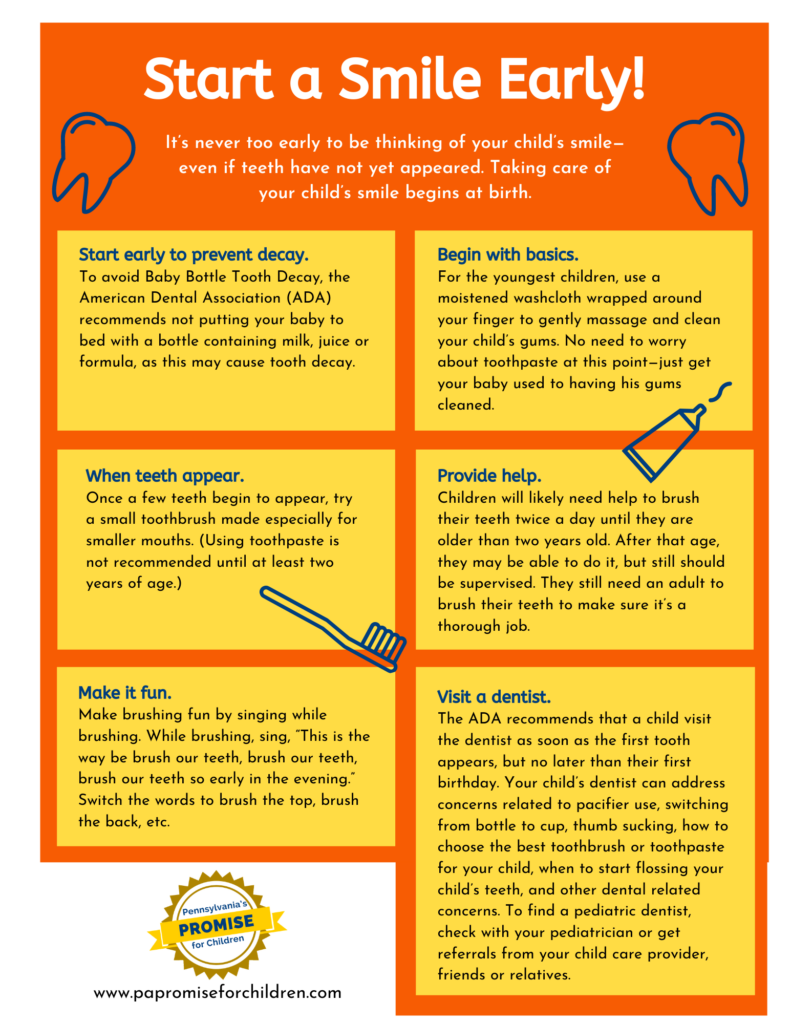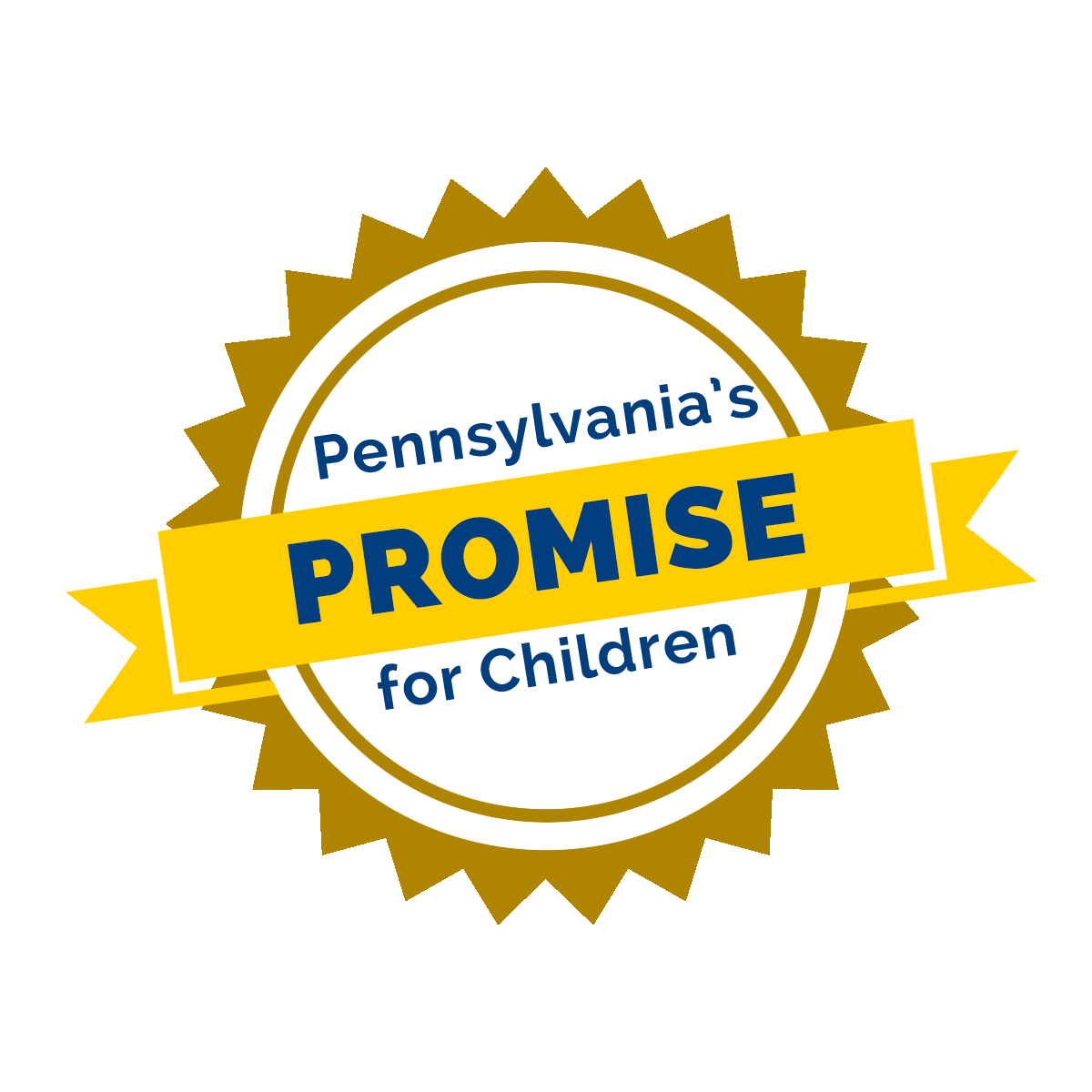
It’s never too early to be thinking of your child’s smile—even if teeth have not yet appeared. Taking care of your child’s smile begins at birth.
Start early to prevent decay. To avoid Baby Bottle Tooth Decay, the American Dental Association (ADA) recommends not putting your baby to bed with a bottle containing milk, juice or formula, as this may cause tooth decay.
Begin with basics. For the youngest children, use a moistened washcloth wrapped around your finger to gently massage and clean your child’s gums. No need to worry about toothpaste at this point—just get your baby used to having his gums cleaned.
When teeth appear. Once a few teeth begin to appear, try a small toothbrush made especially for smaller mouths. (Using toothpaste is not recommended until at least two years of age.)
Provide help. Children will likely need help to brush their teeth twice a day until they are older than two years old. After that age, they may be able to do it, but still should be supervised. They still need an adult to brush their teeth to make sure it’s a thorough job.
Make it fun. Make brushing fun by singing while brushing. While brushing, sing, “This is the way we brush our teeth, brush our teeth, brush our teeth so early in the evening.” Switch the words to brush the top, brush the back, etc.
Visit a dentist. The ADA recommends that a child visit the dentist as soon as the first tooth appears, but no later than their first birthday. Your child’s dentist can address concerns related to pacifier use, switching from bottle to cup, thumb sucking, how to choose the best toothbrush or toothpaste for your child, when to start flossing your child’s teeth, and other dental related concerns. To find a pediatric dentist, check with your pediatrician or get referrals from your child care provider, friends or relatives.
